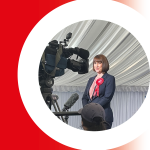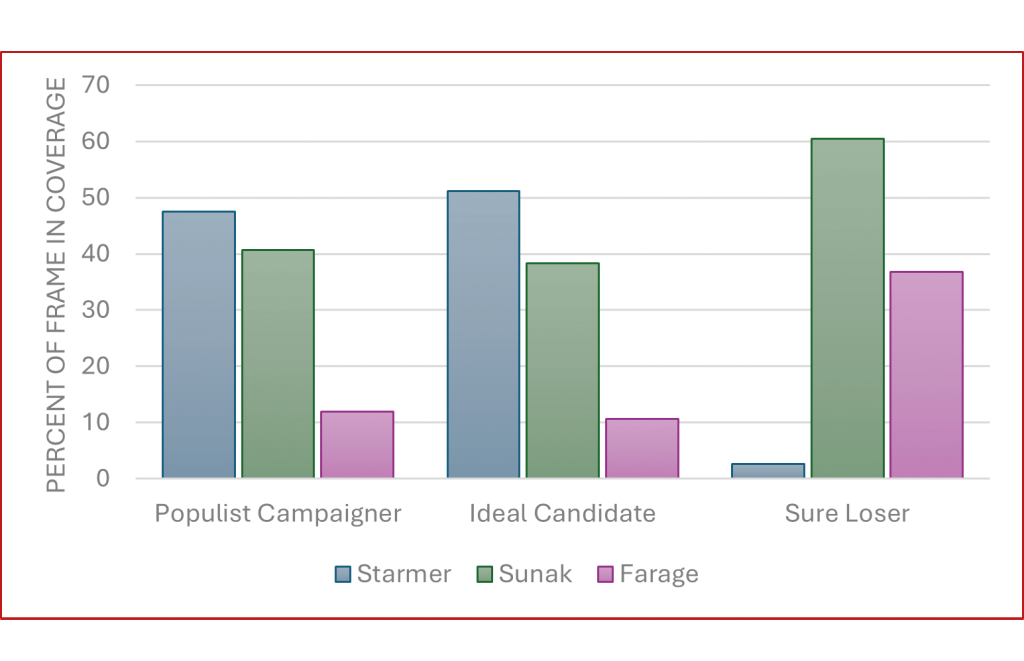
Prof Erik Bucy
Marshall and Sharleen Formby Regents Professor of Strategic Communication in the College of Media and Communication at Texas Tech University, where he teaches and conducts research on misinformation, news literacy, visual communication, and public opinion about the press. In 2023-24, Bucy was a US-UK Fulbright Scholar at Loughborough University.

Dr Nathan Ritchie
Sociology teacher at Loughborough University. His research covers the intersection of politics, history, and media. He focuses on memory work through British media, holds a doctorate on media representations of the Partition of India, and publishes on political communication, particularly elections in the UK and Europe.

UK Election 2024
Section 7: News and journalism
73. Why the press still matters (Prof Steven Barnett)
74. When the Star aligned: how the press ‘voted’ (Prof Dominic Wring, Prof David Deacon)
75. Visual depictions of leaders and losers in the (still influential) print press (Prof Erik Bucy)
76. Towards more assertive impartiality? Fact-checking on BBC television news (Prof Stephen Cushion)
77. The outsize influence of the conservative press in election campaigns (Prof Dan Stevens, Prof Susan Banducci, Prof Ekaterina Kolpinskaya and Dr Laszlo Horvath)
78. GB News – not breaking any rules… (Prof Ivor Gaber)
79. Vogue’s stylish relationship to politics (Dr Chrysi Dagoula)
80. Tiptoeing around immigration has tangible consequences (Dr Maria Kyriakidou, Dr Iñaki Garcia-Blanco)
81. A Taxing Campaign (Prof David Deacon et al)
82. Not the Sun wot won it: what Murdoch’s half-hearted, last-minute endorsements mean for Labour (Dr John Jewell)
83. Is this the first podcast election? (Carl Hartley, Prof Stephen Coleman)
84. A numbers game (Prof Paul Bradshaw)
85. Election 2024 and the remarkable absence of media in a mediated spectacle (Prof Lee Edwards)
86. 2024: the great election turn-off (Prof Des Freedman)
Election outcomes don’t always turn on campaigns, or on media coverage of party leaders—sometimes larger forces are at play. They certainly were in the 2024 UK General Election. Nevertheless, visual framing of major candidates by the agenda-setting print press in this year’s watershed election told an interesting story about political leaders and losers, reflecting back to voters’ prevailing sentiments about Keir Starmer and Rishi Sunak in a manner that reinforced their status in the race.
Across six newspapers analysed for this study, Labour Party leader Starmer was on the whole visually depicted as the presumptive prime minister, an ideal candidate with mass appeal. Meanwhile, Sunak, the sitting Conservative PM, came across as a loser from the start, a lonely, rain-soaked figure surprising all but a handful of trusted insiders with the announcement of the election on 22nd May. Additional missteps ensued.
Other party candidates, notably Ed Davey of the Liberal Democrats and Nigel Farage of Reform UK, were treated as novelties and outliers, characterised by depictions of Davey’s paddleboarding stunts and Farage’s exuberant but unhinged expressions. These observations are backed by systematic analysis of party leader portrayals across six newspapers for the duration of the campaign.
For the study we analysed the visual portrayals of party leaders on the front pages and inside spreads of three broadsheets and three tabloid papers representing a diversity of partisan views: The Times, the Guardian, Daily Telegraph, The Sun, Daily Mail, and Mirror. Despite recent dips in circulation, newspapers were analysed because they remain important in their own right and serve as agenda-setting heralds for other media.
Using a skip interval sampling technique, we performed a visual framing analysis of the hard copies of each paper every two days. Only candidate images were analysed, not the news narratives. If no images appeared in a given title on a given day, we coded the next day’s paper. Altogether, 254 images were coded across 18 days of coverage between 23rd May and 2nd July.
The analysis tracked three major visual frames identified in previous election studies: the populist campaigner (comfortable in plain clothes and ordinary situations, popular amidst adoring crowds); ideal candidate (formally dressed, depicted with other elites, capable of showing compassion); and sure loser (coming across as buffoonish or pitying). In addition, the facial expressions of party leaders were coded, along with the evaluative tone of each visual portrayal (favourable, neutral, or unfavourable).
As shown in Figure 1, and reflecting poll results that favoured Labour, Starmer received positive visual framing as both an ideal candidate and populist campaigner (49% on average) at a higher rate than Sunak (40%), with almost no losing depictions. Sunak was depicted with these winning qualities as well, but less than Starmer and received the lion’s share of loser framing (61%), although the number of instances was not that great (n = 23). Farage was also mostly framed as a loser (37%), despite winning a seat in Parliament (on his eighth try) and five seats for Reform UK.

Further analysis revealed that Sunak’s negative framing was more heavily weighted among left-leaning papers (the Guardian and Mirror), although conservative titles participated as well. Interestingly, positive visual framing of Starmer and photographs of him smiling were proportionately higher in conservative titles than liberal, although article counts for Sunak were higher in the right-leaning press. These findings portend The Sun’s ultimate endorsement of Labour, which hadn’t happened since Tony Blair’s election in 1997.
While the visual trends described here explain the broader patterns of coverage at play, two episodes stand out as particularly memorable beyond Sunak’s soggy announcement: Farage being hit by a banana milkshake while launching his personal election campaign in Clacton—a humiliation he also endured in Newcastle in 2019; and, Sunak’s ducking out of the 6th June D-Day commemorations early for an ITV interview, which produced a furore and cleared space for Starmer to assume the role of statesman and prime minister-in-waiting.
For many voters, Sunak’s D-Day blunder epitomised the tone deaf quality of the Conservative Party after 14 years of largely unchallenged rule, which was also tarnished by a betting scandal on when the election would be called. By contrast, stunts such as Davey’s falling off his paddleboard in Lake Windemere (the site of illegal sewage dumping in February) or bungee jumping in Eastbourne (encouraging voters to take a chance) were viewed as harmless fun—the exploits of a rollicking campaigner. Whether Davey’s stunts or strategic voting accounted for the Lib Dems’ historic wins in Parliament, his antics certainly didn’t hurt.
Both in their presence and, in the case of Sunak ducking out from D-Day commemorations, absence, visuals are influential elements of campaign communication that are well remembered by voters. By receiving positive visual treatment across both left- and right-leaning press, Starmer and therefore Labour benefitted from coverage that crossed the ideological divide, whereas Sunak’s visual reinforcement mostly derived from conservative titles. Visuals most certainly did not determine the outcome of the election on their own but they played a role, particularly in allowing conservative audiences the opportunity to see Labour in a positive light.
